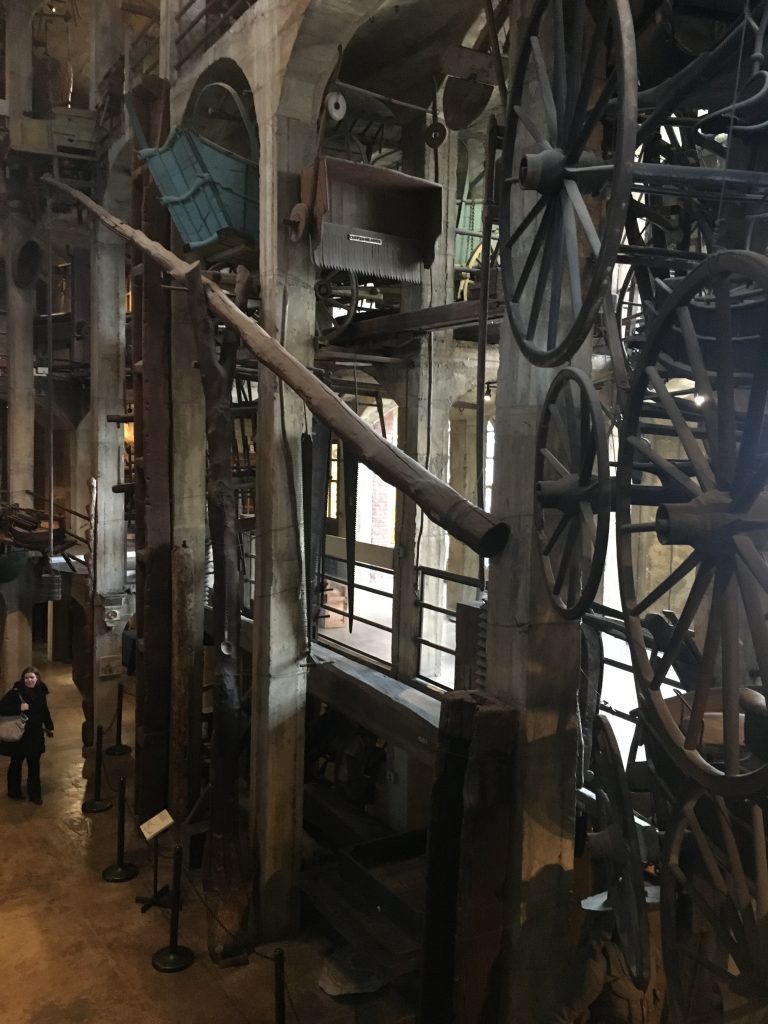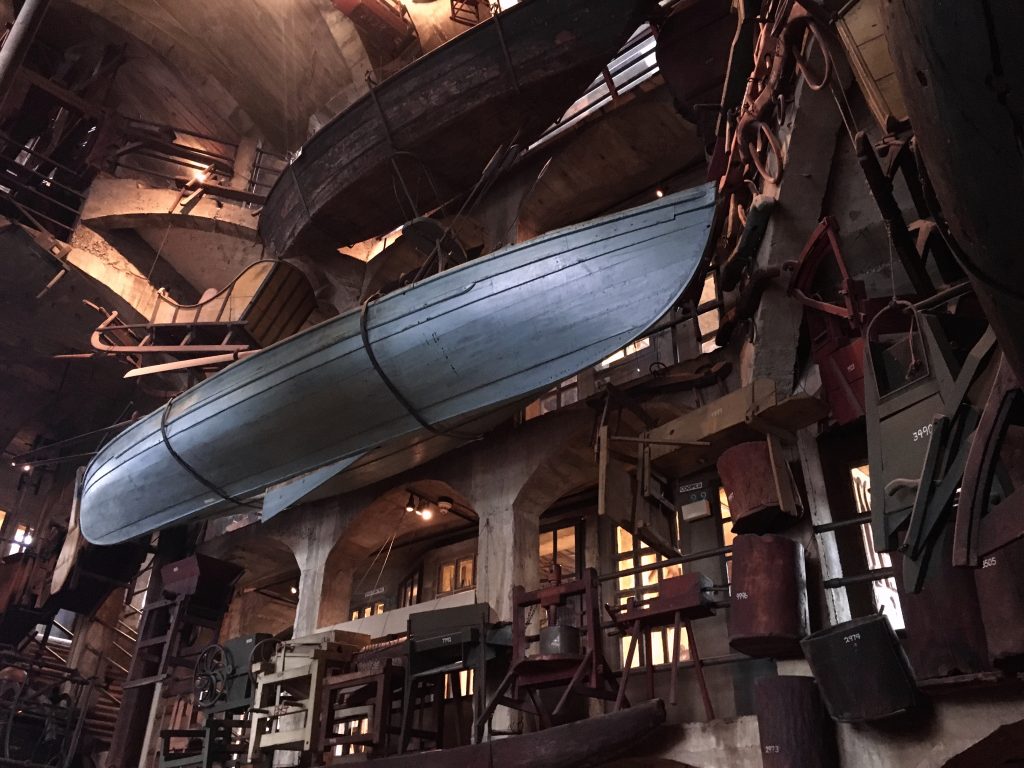
Spotted at Philly AIDS Thrift.
As much as I love travelling, spending my breaks on campus is surprisingly restful. I love having some extra time to sleep in, watch a new TV show, and catch up on my hobbies, especially after the stress of midterms.
I also use my break to explore places around Philadelphia that I wouldn’t normally think to visit. I usually go out specifically to run an errand or to visit friends, which doesn’t leave much time for casual exploring. This week I went to three new places: Philly AIDS thrift, the Philadelphia Museum of Art, and– the real highlight of the week– the Mercer Museum.
The Mercer Museum is a bit of a trek. It’s located in Doylestown, which is about 45 minutes away from Bryn Mawr by car or 2 hours and 36 minutes by train. There are limits to my love of public transit, so I recruited a friend with a car and we set off.
The museum is the brainchild of Henry Mercer, a “gentleman anthropologist” who was concerned by the rapid disappearance of European artisanal and pre-industrial craft during the industrial revolution. He dedicated himself to accumulating a wide range of tools and built a museum to preserve them. Small rooms and alcoves dedicated to particular crafts ring a central hall filled with larger pieces of equipment. Some of the trades represented include needlework, farming, butchery, cobbling, barrel-making, watchmaking, and more. The second floor houses a gorgeous library, and scattered throughout the main hall are little special exhibit galleries.

The cobbler’s room at the Mercer Museum
Now, I have a well-demonstrated interest in pre-industrial technology. I spent 3 years working on a 19th century schooner. I know how to spin yarn with a drop spindle, cook on a wood-burning stove, and one of my life goals is to learn to make bobbin lace. To say that the Mercer Museum is up my alley is a complete understatement. There were crafts on display I hadn’t even thought to learn about! Hat making! Tinsmithing! Horn working! Plus, only a few of the items on display had explanatory plaques, so it was incredibly fun to try to guess the uses and functions of every object.
The museum is overflowing with objects on every available surface– even the ceiling. In the era of mass production it is easy to forget that there are still people behind every single thing that appears in stores. For me, at least, that effect can extend to museums and historical sites as well– because I’ve never had to make a fancy table, for example, I wouldn’t think to appreciate it beyond the aesthetic level. However, at the Mercer Museum the tools of production behind nearly every object are on display. It forces you to really consider the amount of labor and expertise required to produce every single thing you see, as well as the work that was required to obtain even the most basic amenities of life.

The building itself is another marvel- 6 stories of poured concrete in the shape of a castle. Mercer had seen his aunt’s collection of medieval armor lost to a fire and was determined to fireproof his own collection. The result is cold and a little strange, with ornate architectural features rendered in rough concrete.

Mercer was influenced by the Arts and Crafts Movement
There is another part of the Mercer Museum– Fonthill Castle– Mercer’s home and the showplace of his vast collection of tiles. It’s also made of concrete, and has more than forty rooms. Given our time constraints, my friend and I decided to save it for another day, but from the photos I’ve seen it’s just as cool.
For now, here’s some more pictures of the museum:



The library.

